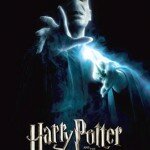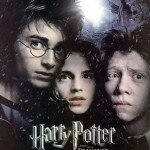Five mistakes filmmakers make in depicting race
Originally published at Psychology Today’s Between the Lines blog (original post)
Every so often, Hollywood produces a film about racial issues that is so honest, so truthful, so powerful that I wish every person could see it. Do The Right Thing (1989) is one such film. Crash (2005) is another. It’s not that these are perfect films, just that they know how to deal with the racial themes they take on. Unfortunately, this is the exception not the rule. Here are five common mistakes writers and filmmakers make in representing racial dynamics.
-

Can a Death Eater ever unlearn racism? Not according to Rowling.
The racist personality. By far the most common implied explanation for racism in film is some sort of personality flaw. In this way, “racist” is often just a synonym for “evil”. In the Harry Potter franchise, for example, it is only the Slytherin House that seems to produce Death Eaters (the Potter universe’s version of the Nazis). Since students are magically “sorted” into the Houses based on their personality and preferences, the implication is that racism is a personality trait. Personality is generally seen as stable and resistant to change, and this is pretty much how racism in depicted in the Harry Potter universe. In reality, it doesn’t work that way at all. Racism is a learned response, which means that, unlike most personality traits, it can also be unlearned. In addition, like any other form of behavior, the expression of racism is strongly influenced by a variety of social and contextual factors. As a result, the same people often behave very differently depending of the context. This is one of the many things Crash got right — that decent, moral, well-intentioned people also perpetrate racism. For this reason, except perhaps for those who take pride in self-identifying as a racist, it is generally much more accurate to talk about racist behavior than racist people.
-

Is prejudice against mutants comparable to real-world prejudice against racial minority groups? Perhaps...if the racial minority groups had superpowers.
Inappropriate metaphors. According to long-time X-men writer Chris Claremont, “The X-men are hated, feared and despised collectively by humanity for no other reason than that they are mutants. So what we have here, intended or not, is a book that is about racism, bigotry and prejudice.” Sure, except that the mutants have all sorts of superior powers and abilities that regular humans do not. Blacks and other historically targeted racial groups? Not so much. In the X-universe, the hate and fear is at least partly rational, since the mutants really are superior and, as such, pose a legitimate threat. What exactly is the threat from people of color? What exactly is it that we should fear and hate?
-

What do we know about Bagger Vance? Is it mere coincidence that his sole purpose seems to be to help Junuh's golf game?
The magic negro phenomenon. Washington Post film critic Rita Kempley defined magic negro characters as characters who are “likable, valuable or redemptive, but…are without interior lives.” Their only purpose, it seems, is to rescue the featured white character. Time columnist Christopher Farley argues that because of writers’ fundamental ignorance of African American life and culture, Black characters get magical powers instead of life histories and love interests. Among the many recent examples cited by critics are John Coffey in The Green Mile, Bagger Vance in The Legend of Bagger Vance, and Morgan Freeman’s God in Bruce Almighty and Evan Almighty.
-

Walt's going to save the day. Don't let his age fool you. All that matters is that he's white.
The White savior. The 2008 film Gran Torino is supposed to be about racial tolerance and openness. No less an authority than Roger Ebert described it as being “about the belated flowering of a man’s better nature…and … Americans of different races growing more open to one another in the new century.” These are admirable intentions, and, in many ways, it is a good film, good enough to be recognized by the American Film Institute as one of the Ten Best Films of 2008. But it is also a deeply flawed film, seemingly excusing Walt Kowalski’s constant bigotry (as just one example, he constantly refers to the Hmong family next door as “gooks”) by first depicting him as an equal-opportunity racist (he calls his Italian-American barber a “dago”) and then by having him befriend and sacrifice his life for his Hmong neighbor. The so-called “equal-opportunity” racism is a smoke-screen. Walt’s relationship with his barber is long-standing, friendly, and characterized by equal status. During the first part of the film, none of that is true of his relationship with his neighbors, which means that the racist language has an entirely different impact in the two contexts. The film’s implication that they are comparable shows a profound lack of familiarity with even the most basic tenets of U.S. racial dynamics. Similarly, the film’s climactic ending was designed exclusively for the purpose of serving as Walt’s redemption. It works on that level, but in terms of race relations, it only serves to reinforce the stereotype that Asians (and people of color in general) are unable to solve their own problems and must rely on a white savior to come to their rescue. That the savior is a bigot that would put Archie Bunker to shame, only makes the matter worse.
-

Harry, Ron, and Hermione never think about race in the conventional sense, or do they?
A color blind world. Race relations is clearly among the most prominent and important themes in the Harry Potter books and films, with wizards, muggles, and goblins representing symbolic racial categories. It’s curious, then, that despite a muggle (human) world that is exactly as our own save the presence of a parallel magical universe, race, as we know it, has absolutely no meaning. Not only does no one notice it, as far as we know, no one ever even thinks about it. In the Harry Potter universe, everyone is not just racially color-blind; they’re color-unconscious. This is likely J.K. Rowling’s attempt at depicting a racial utopia, but it rings hollow, especially when ethnic elements, such as Irish traditions, are carefully represented. It’s great that Johnson, Thomas, Parvati Patil, and Cho Chang are all at Hogwarts, but it’d be even better if fans could also have a window into their inner world. What’s it like to be non-White in Hogwarts? Rowling would have us believe that it is no different than being White, but what does she know about it? We want to hear about it directly from the characters, which means they simply have to talk about, or, at the very least, give it some thought.
Author: Mikhail Lyubansky (11 Articles)

Mikhail Lyubansky, Ph.D., is a member of the teaching faculty in the Department of Psychology at the University of Illinois, Urbana-Champaign, where he teaches Psychology of Race and Ethnicity and Theories of Psychotherapy. His research and writing interests include racial/ethnic group relations and restorative justice. He is a regular contributor to anthologies on popular culture, including Harry Potter, Buffy the Vampire Slayer, and House MD, published by BenBella and recently co-authored a book on the Russian-Jewish diaspora: Building a diaspora: Russian Jews in Israel, Germany, and the United States. In addition to his PT blog Between the Lines, he is a managing editor at http://www.OpEdNews.com All material on this site published under his byline remains the property of Mikhail Lyubansky, copyright 2009, 2010. Permission is granted to repost and distribute, with proper attribution. Born in Kiev, Mikhail immigrated with his family to the United States as a child in 1977.
Most Recent
Recent Comments
- Blog News- Left and Right Views » Race-Talk » Blog Archive » Michael Barone gets his facts wrong on Michael Barone gets his facts wrong
- Acknowledging Difference, not Defeat: A Racial Justice Perspective on the Medicaid Debate | health justice NYC on Acknowledging difference, not defeat
- Links of Great Interest: Bring Amina home! — The Hathor Legacy on In prison reform, money trumps civil rights
- Race-Talk » Blog Archive » President Barack Obama, Dred Scott: A … | Barack Obama on President Barack Obama, Dred Scott: A case of domestic terrorism
- In prison reform, money trumps civil rights « Politicore on In prison reform, money trumps civil rights
Search in Archive
Favorite Blogs
What is Race-Talk?
The Race-Talk is managed and moderated by the staff at the Kirwan Institute for the Study of Race and Ethnicity and is open to all respectful participants. The opinions posted here do not necessarily represent the views of the Kirwan Institute or the Ohio State University.
Our goal is to revolutionize thought, communication and activism related to race, gender and equality. Race-Talk has recruited more than 30 extraordinary authors, advocates, social justice leaders, journalists and researchers who graciously volunteered their expertise, their passion and time to deliberately discuss race, gender and equity issues in the US and globally.


COMMENTS